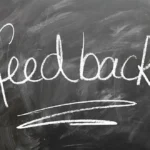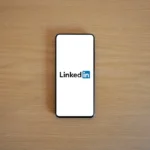There I was, sipping my morning coffee and scrolling through Twitter when I first encountered the term “real-time social listening.” It sounded intriguing yet daunting, especially when coupled with the term “crisis.” My curiosity piqued, I decided to explore this concept further, and soon enough, I found myself knee-deep in one of the most educational experiences of my professional life. Here’s how you can replicate my journey and master the art of real-time social listening during a crisis.
Getting Started: Understanding Real-Time Social Listening
Real-time social listening is essentially the practice of monitoring social media channels for mentions of your brand, competitors, and relevant keywords in real-time. It goes beyond mere social media monitoring by enabling you to respond almost instantaneously, which is crucial during a crisis. Think of it as having your ear to the ground, ready to act at a moment’s notice.
Setting Up Your Toolkit
The first step in my journey was setting up the right tools. I experimented with several social listening platforms like Hootsuite, Brandwatch, and Sprout Social. Each of these tools has its own strengths, but I finally settled on Hootsuite for its user-friendly interface and comprehensive analytics.
-
Choose Your Platform: Select a tool that best fits your needs and budget. Most offer free trials, so don’t hesitate to test a few before committing.
-
Configure Your Keywords: Input relevant keywords, hashtags, and mentions. For instance, if your brand is “EcoClean,” you’d monitor terms like “EcoClean,” “EcoClean fail,” or even “EcoClean scandal.”
-
Set Up Real-Time Alerts: Ensure you receive notifications the moment your keywords are mentioned. This is critical for prompt response during a crisis.
Building a Response Team
Effective social listening is a team effort. I quickly realised that having a dedicated team in place was essential for timely and effective responses.
-
Create a Crisis Response Team: Depending on the size of your organisation, this could include PR professionals, social media managers, and customer service representatives.
-
Assign Roles and Responsibilities: Clearly define who is responsible for monitoring, who drafts responses, and who has the authority to make final decisions. This will streamline your process and avoid confusion.
-
Training: Ensure your team is well-versed in using the social listening tools and understands the brand’s voice and crisis communication strategy.
Monitoring and Analysing Data
Once your system is in place, the real work begins. The first few days were overwhelming, with a flood of information coming in. However, I quickly developed a system to manage the data effectively.
-
Prioritise Mentions: Not all mentions require immediate action. Prioritise based on the potential impact on your brand. I used a simple colour-coding system: red for urgent, yellow for moderate, and green for low priority.
-
Analyse Trends: Look for patterns and trends in the data. During a crisis, this can help you understand the root cause and the overall sentiment. For instance, I noticed a spike in negative mentions of EcoClean linked to a specific product issue.
-
Contextual Understanding: Don’t just rely on keywords; understand the context. Sometimes, a seemingly negative mention could be a sarcastic remark or an industry joke.
Crafting Your Response
Responding appropriately is both an art and a science. It requires a delicate balance of empathy, clarity, and authority. Here’s how I approached it:
-
Acknowledge Quickly: The sooner you acknowledge the issue, the better. Even if you don’t have all the answers yet, letting your audience know you’re aware of the problem can buy you some time.
-
Be Transparent and Honest: People appreciate honesty. If there’s a genuine issue, admit it and outline the steps you’re taking to resolve it. During the EcoClean crisis, we issued a statement admitting the fault and promised regular updates.
-
Provide Regular Updates: Keep your audience informed with regular updates. This builds trust and shows that you’re actively working on a solution.
Learning and Adapting
Every crisis is a learning opportunity. After navigating through the EcoClean situation, I took some time to reflect and analyse what worked and what didn’t.
-
Conduct a Post-Mortem: After the crisis subsides, gather your team for a debrief. Discuss what went well, what could have been better, and how you can improve in the future.
-
Update Your Crisis Plan: Use the insights gained to update your crisis communication plan. This ensures that you’re better prepared for any future incidents.
Bringing It All Together
Real-time social listening during a crisis is like navigating through a storm. It requires the right tools, a dedicated team, and a well-thought-out strategy. By setting up an effective monitoring system, training your response team, and crafting thoughtful responses, you can turn a crisis into an opportunity to strengthen your brand’s reputation. Through careful observation, quick action, and constant learning, you can not only weather the storm but also emerge stronger on the other side.











